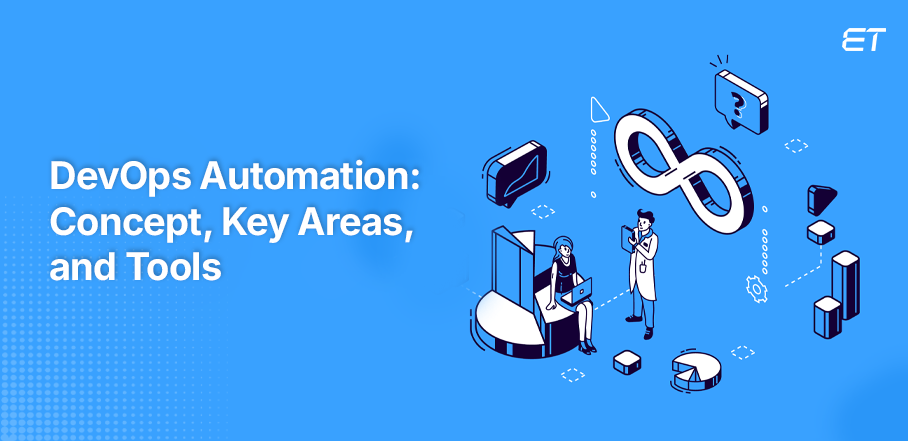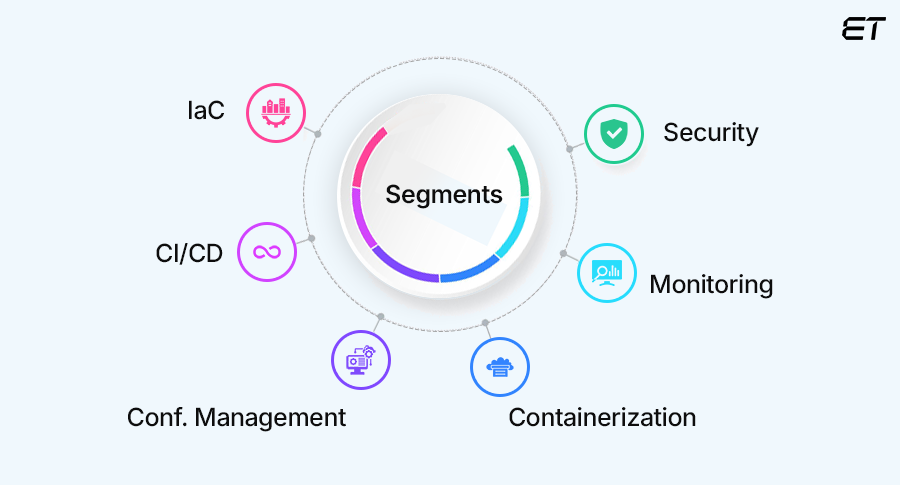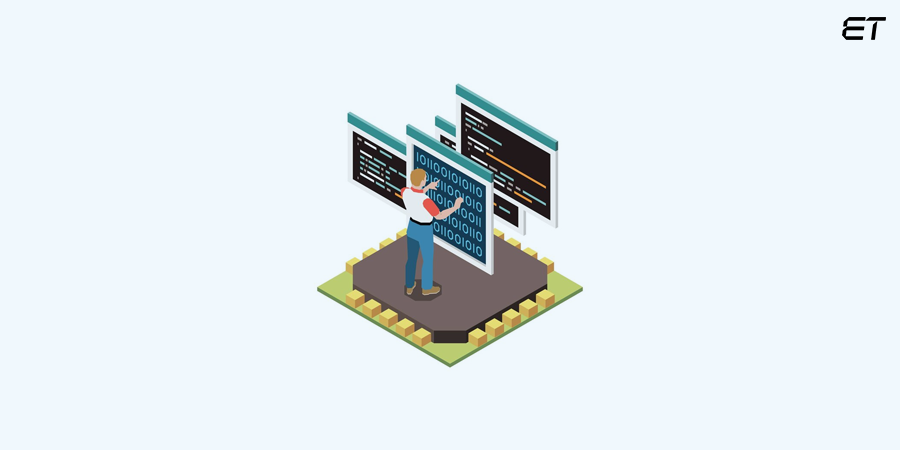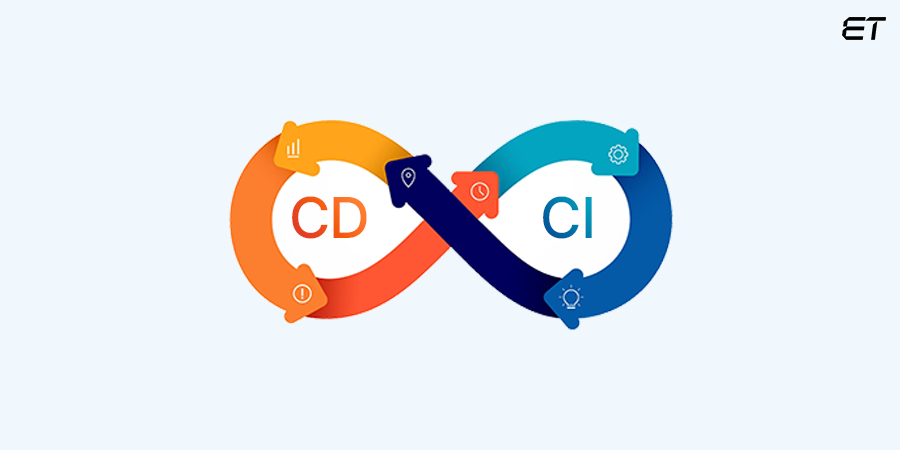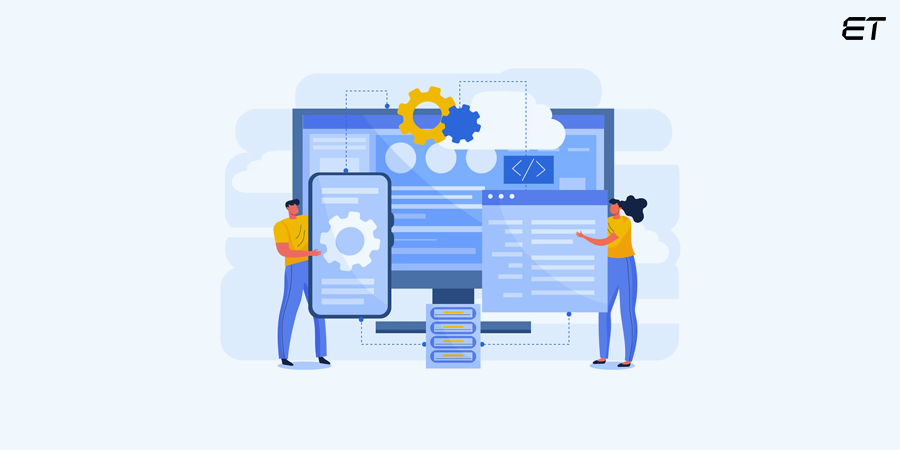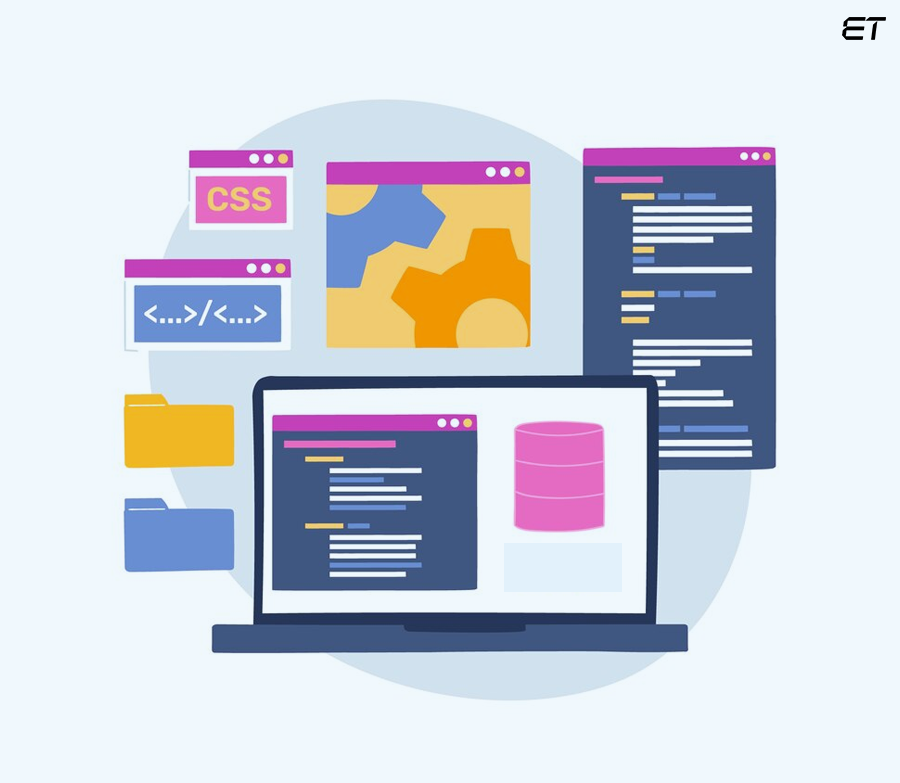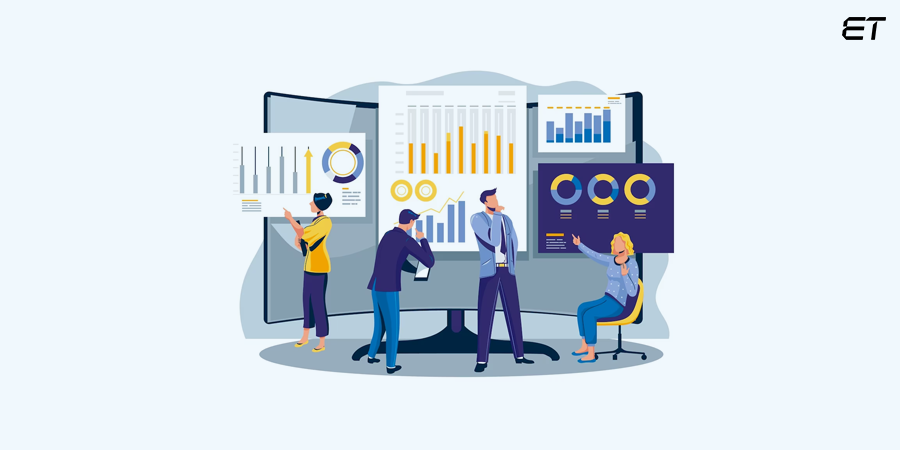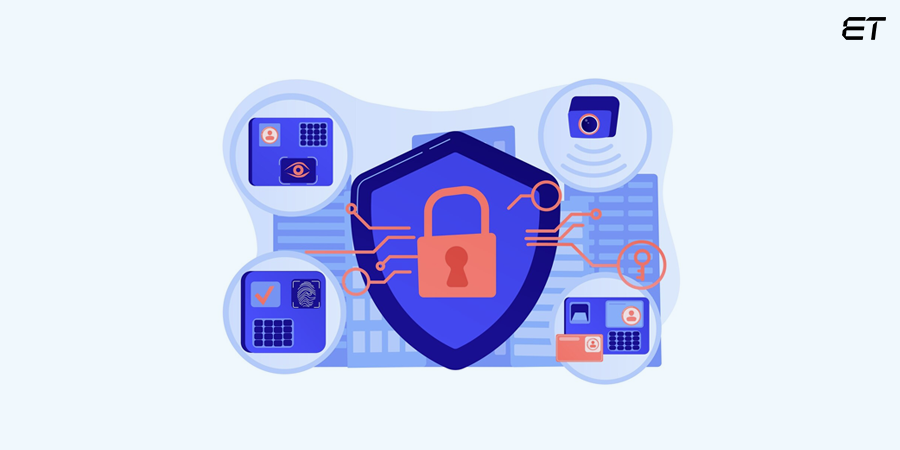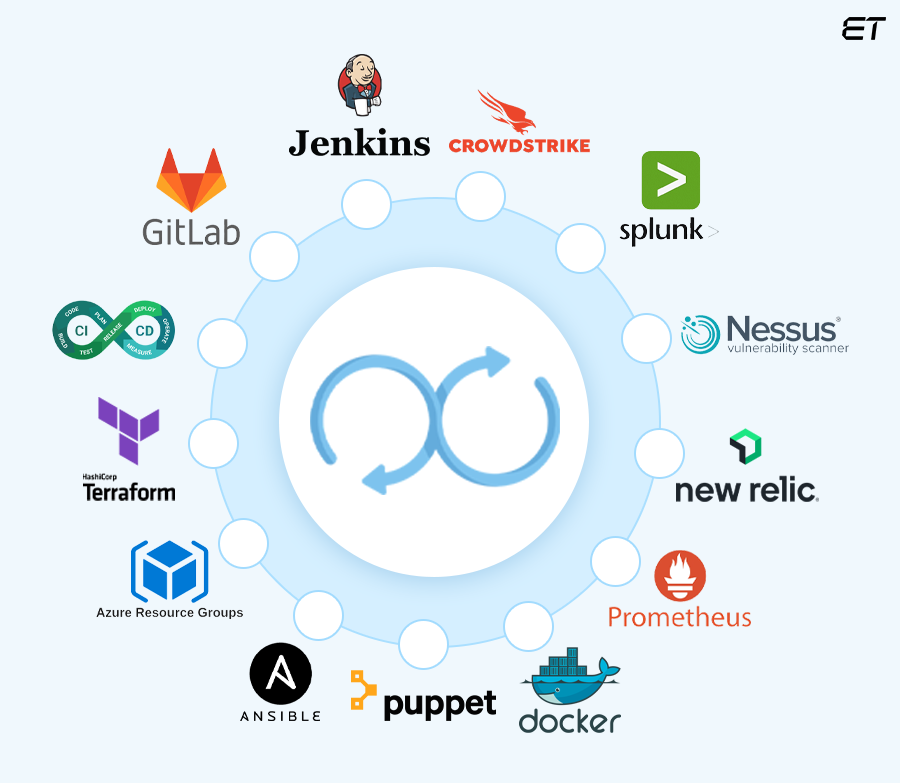In 2020, Statista conducted an online survey on the topic of DevOps. The response was interesting and highlighted the significance of DevOps automation for your business.
80% of respondents stated that DevOps is ‘extremely important’ for scaling software development. This staggering number is a testament to this beneficial trend in IT and digital technology.
As a business, you need to understand the proper way to automate DevOps processes to make the best utilization of this philosophy. So, we decided to offer an all-inclusive DevOps automation guide that can be a handy reference for you or any professional.
Scroll ahead to understand the significance of DevOps and get conversant with some handy automation tools that can prove helpful for your business.
What is DevOps Automation?
Before delving right into the ‘automation’ aspect, let us understand the concept of DevOps.
DevOps is a set of practices, tools, and a cultural philosophy that aims to integrate and automate the work of software development teams.
The trend focuses on breaking down silos between traditionally separate teams and creating a more efficient, collaborative, and responsive software delivery process.
Here are the key principles of DevOps:
- Collaboration: DevOps promotes a culture of collaboration between development and operations teams, fostering a shared sense of ownership and responsibility
- Automation: Automation is a cornerstone of DevOps, helping to streamline repetitive tasks and reduce manual errors
- Continuous Delivery: DevOps emphasizes continuous delivery, where software changes are released frequently and reliably
- Feedback Loops: DevOps encourages rapid feedback loops to identify and address issues early in the development process
Through DevOps, you can deliver new features and updates at a brisk pace. Also, practices like continuous testing ensure high-quality software. In addition, you can respond quickly to customer feedback and improve overall satisfaction.
Now, DevOps automation implies the practice of using tools and technologies to automate various stages of the software development and delivery lifecycle. In the next section, we will elaborate on the DevOps lifecycle and automation.
Need to connect with DevOps experts to expedite your development project? Explore our services now!
The Critical Areas of DevOps Automation
There are six key areas in DevOps automation:
- Infrastructure as Code (IaC)
- CI and CD
- Configuration Management
- Containerization
- Monitoring
- Security Automation
The next sections will elaborate on each area in depth.
1. Infrastructure as Code (IaC)
This fundamental practice within DevOps revolutionizes infrastructure management. It involves using code to describe and manage resources (like servers, networks, and storage). Notably, this DevOps automation approach offers several significant advantages over traditional manual methods.
Here are some of the main benefits:
- IaC ensures the provision and configuration of infrastructure across different environments (development, testing, production). This facet reduces the risk of human errors and inconsistencies
- It allows for rapid provisioning and de-provisioning of infrastructure resources. This ability accelerates development cycles and enables faster time-to-market
- IaC makes it easy to reproduce infrastructure configurations, ensuring that environments are identical and can be easily recreated
- You can version control the code, making it possible to track changes, revert to previous states, and collaborate effectively
Consider a scenario where a development team needs to set up a new development environment for a project. Traditionally, this would involve manually creating servers, configuring networking, and installing required software.
With IaC, this process can be automated using a configuration file written in a declarative language. The file would specify the desired infrastructure resources (e.g., number of servers, server type, network configuration, software installations). When this file is executed, the IaC tool will provision the infrastructure based on the specified configuration.
2. CI and CD
Continuous Integration (CI) and Continuous Delivery (CD) are two core practices of automation in DevOps within DevOps that automate the software development and delivery pipeline.
They work together to ensure that code changes are integrated, tested, and deployed frequently and reliably.
Simply put, CI is the practice of merging code changes into a shared repository frequently and automatically building and testing the resulting codebase.
Generally, the following steps define the process of continuous integration:
- Developers commit their code changes to a shared repository (e.g., Git)
- The CI server automatically builds the code into a runnable artifact (e.g., executable, package)
- Automated tests (unit, integration, etc.) are run against the built code
- The results of the build and tests are reported back to the development team
The benefits of CI in DevOps automation are as follows:
- Early Detection of Issues: Problems are identified and fixed sooner, reducing the cost of fixing defects later in the development cycle
- Improved Code Quality: Frequent integration and testing help maintain code quality and prevent the accumulation of technical debt
- Faster Feedback: Developers receive immediate feedback on the impact of their code changes, allowing them to make adjustments quickly
- Enhanced Collaboration: CI fosters collaboration among team members by promoting frequent code sharing and review
Now, let us understand continuous delivery in DevOps automation. CD is the practice of automatically deploying code changes to production environments after they pass through the CI pipeline.
Here are the main steps of performing CD:
- The built code is packaged into a deployable artifact (e.g., container image, WAR file)
- The artifact is automatically deployed to the desired environment (e.g., development, staging, production)
- Additional tests (e.g., smoke tests, end-to-end tests) may be run in the deployed environment
- The deployed application is monitored to ensure it is functioning as expected.
Overall, by implementing CI and CD, organizations can improve their software development and delivery processes, leading to faster time-to-market, higher quality, reduced human error and greater efficiency.
Unravel proven best DevOps practices that improve stability, enhance efficiency, and lead to fewer bugs. Refer to our blog for valuable insights.
3. Configuration Management
This term is a critical practice within DevOps automation that ensures that systems and applications are configured consistently across different environments. It involves managing the configuration of software, hardware, and network components to maintain desired states.
Here are the key benefits of configuration management:
- Consistency
- Repeatability
- Compliance
- Efficiency
The configuration management workflow is as follows:
- Configuration management (CM) tools use declarative languages to define the desired state of systems and applications
- The CM tool compares the current state of the system to the desired state and applies the necessary changes to bring it into compliance
- You can monitor systems for configuration drift, which occurs when the current state deviates from the desired state
- If configuration drift is detected, the CM tool can automatically remediate the issue by applying the necessary changes
Best practices for configuration management are modularity, testing, version control, and automation. So, ensure that you follow these strategies to boost your DevOps automation cycle.
4. Containerization
This packaging technology bundles an application and its dependencies into a single unit called a ‘container.’ The process provides a consistent and isolated environment for applications to run, regardless of the underlying infrastructure.
By leveraging containerization in DevOps automation, you can notice the following advantages:
- Portability
- Efficiency
- Isolation
- Consistency
- Scalability
For successful implementation of containerization, you can adopt the following steps:
- Create a Dockerfile: A Dockerfile is a text document that contains instructions for building a container image. It specifies the base image, dependencies, and configuration settings
- Build the Image: The Dockerfile is used to build a container image, which contains the application and its dependencies
- Run the Container: The container image can be run to create a container instance
- Manage Containers: Container orchestration platforms like Kubernetes can be used to automate the deployment, scaling, and management of containers
Through this process, you can automate DevOps practices and deploy applications at a rapid pace. Also, it is possible to reduce the overhead of running applications, improving efficiency and resource utilization.
So, by adopting containerization, organizations can improve their software development and delivery processes, leading to faster time-to-market, higher quality, and greater efficiency.
5. Monitoring
This component of DevOps automation provides valuable insights into the health, performance, and behavior of applications and infrastructure.
It enables organizations to proactively identify and address issues, ensuring optimal performance and reliability.
Through effective monitoring, you can experience the following benefits:
- Proactive Problem Identification: Monitoring or test automation tools can detect issues early, preventing downtime and minimizing business impact
- Performance Optimization: Monitoring helps identify performance bottlenecks and optimize resource utilization
- Capacity Planning: By understanding usage patterns, organizations can effectively plan for future capacity needs
- Compliance: Monitoring can help ensure compliance with industry regulations and service level agreements (SLAs)
- Security: Monitoring can help detect and respond to security threats.
There are several types of monitoring in DevOps automation. For instance, Application Performance Monitoring (APM) monitors the performance of applications, including response times, error rates, and resource utilization. On the other hand, Infrastructure Monitoring tracks the performance of infrastructure components, such as servers, networks, and storage.
Another common type in this area is Log Monitoring. This technology monitors system logs to identify errors, security events, and performance issues. By effectively implementing monitoring, organizations can gain valuable insights into the health and performance of their applications and infrastructure, enabling them to make data-driven decisions and ensure optimal operations.
Have complex project requirements? Fret not! Drop in your project details and our DevOps experts will get back to you ASAP.
6. Security Automation
The final area of DevOps automation is the practice of using tools and technologies to automate various security tasks. This component helps organizations to improve their security posture and reduce the risk of security breaches.
Here are the vital benefits of Security Automation:
- Faster Response Times: Automated security tools can detect and respond to threats more quickly, reducing the impact of security incidents
- Improved Efficiency: Automation can reduce manual effort and streamline security processes, freeing up security teams to focus on strategic initiatives
- Consistent Enforcement: Automated security policies ensure that security standards are consistently applied across the organization
- Enhanced Compliance: Security automation can help organizations meet regulatory requirements and industry standards
- Reduced Risk: By automating security tasks, organizations can reduce the risk of human errors and improve their overall security posture
You should be aware of the key areas of Security Automation. The following table contains all the essential information.
| Security Automation Area | Explanation |
| Vulnerability Scanning | Automated tools can scan applications and infrastructure for vulnerabilities and provide recommendations for remediation |
| Incident Response | Incident response tools can help organizations detect, investigate, and respond to security incidents more efficiently |
| Configuration Management | Ensures that systems and applications are configured securely can help prevent vulnerabilities and attacks |
| Threat Intelligence | Automated threat intelligence tools can help organizations stay informed about emerging threats and vulnerabilities |
| Security Testing | Automated testing tools can help identify security weaknesses in applications and infrastructure |
| Access Control | Automated access control systems can help manage user permissions and prevent unauthorized access |
All in all, you can bolster DevOps automation by effectively implementing security automation. This way, you reduce the risk of security breaches and ensure compliance with industry standards.
Well-Known DevOps Automation Tools
After getting familiar with the critical areas, you need to equip yourself with the right tools and technologies. This section briefly explains the utility of some handy DevOps automation tools in the market.
| Tool | Utility |
| Continuous Integration/Continuous Delivery (CI/CD) Tools | |
| Jenkins | Open-source CI/CD server; can be customized to fit various workflows |
| GitLab CI/CD |
Integrated with GitLab, offering a comprehensive CI/CD solution |
| CircleCI | Cloud-based CI/CD platform with a user-friendly interface |
| Travis CI | Cloud-based CI/CD platform with support for various programming languages |
| Infrastructure as Code (IaC) Tools | |
| Terraform | Open-source IaC tool that supports multiple cloud providers |
| Ansible | Configuration management tool that can also be used for IaC |
| CloudFormation |
AWS-specific IaC service |
| Azure Resource Manager | Azure-specific IaC service |
| Configuration Management Tools | |
| Ansible | Agentless configuration management tool |
| Puppet | Agent-based configuration management tool |
| Chef | Alternative container runtime |
| SaltStack | Master-minion architecture for configuration management |
| Containerization Tools | |
| Docker | Popular containerization platform |
| Kubernetes | Container orchestration platform |
| rkt | Alternative container runtime |
| Monitoring Tools | |
| Prometheus | Open-source monitoring system |
| Grafana | Visualization tool for monitoring data |
| New Relic | Cloud-based APM and infrastructure monitoring |
| Datadog | Full-stack monitoring platform |
| Security Automation Tools | |
| Nessus | Vulnerability scanner |
| OpenSCAP | Compliance scanner |
| OWASP ZAP | Web application security scanner |
| Splunk | SIEM platform |
| CrowdStrike Falcon | Endpoint protection |
In a Nutshell
DevOps automation is a powerful tool that can significantly enhance your software development life cycle and delivery processes’ efficiency, reliability, and scalability. By automating repetitive tasks, integrating tools, and fostering collaboration, DevOps automation enables you to deliver high-quality software faster and more efficiently.
To maximize this methodology’s benefits, selecting the right tools and technologies for your specific needs is essential. Consider factors such as your team’s expertise, the complexity of your applications, and your organization’s overall goals. Additionally, it is important to establish a strong DevOps culture that encourages collaboration, experimentation, and continuous improvement.
If you need professional guidance in this process, always choose established DevOps consulting services to get the best results.
Frequently Asked Questions
1. What is the difference between DevOps and DevSecOps?
DevOps focuses on integrating development and operations. On the contrary, DevSecOps includes security practices throughout the software development lifecycle. For more information, you can read our blog on this topic.
2. How can DevOps automation help with cloud migration?
DevOps automation can streamline the process of migrating applications to the cloud by automating tasks like infrastructure provisioning, configuration management, and deployment.
3. What are some challenges of DevOps automation?
Some common challenges of this methodology are organizational resistance to change, lack of skilled personnel, and the complexity of integrating various tools and technologies.
4. How can DevOps automation improve collaboration between teams?
Through automating DevOps, you can break down silos between development, operations, and security teams by providing a common platform for collaboration and shared ownership.
5. What is the future of DevOps automation?
We can expect to see further advancements in DevOps automation, such as increased use of artificial intelligence (AI) and machine learning for tasks such as predictive analytics and automated remediation.
Excellence-driven professional with 15+ years of experience in increasing productivity, and revenue, while effectively managing products of all sizes. He has worked for international clients in the US, UK, and Singapore and local companies in various domains. With excellent attention to detail and a methodical approach to execution, he is an expert in bringing projects to a successful stage. He follows James Humes’s famous saying- “The art of communication is the language of leadership.”
